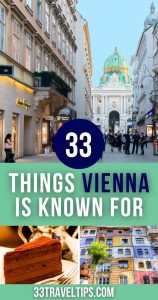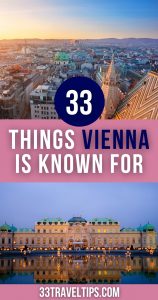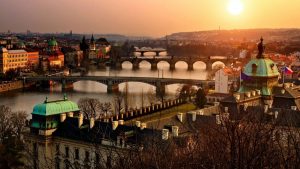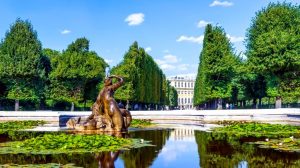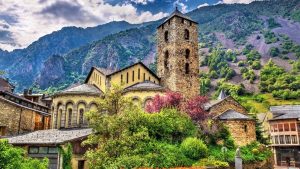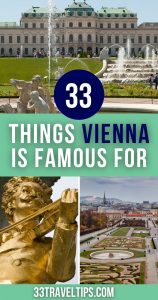
Vienna is known for its rich cultural heritage, imperial palaces, splendid landmarks, exceptional cuisine, fragrant wines, and the breathtaking Danube River. Vienna is also famous for being the Waltz Capital of the World, and for the past decade – the best city to live in.
Below, you’ll discover 33 amazing things Vienna is popular for.
From the historical attractions to the scrumptious delicacies, and from the musical legacy to the peculiar facts, we bet you’ll stop wondering what is Vienna known for.
Let’s explore!
Start Planning Your Trip to Vienna with Our BEST Recommendations:
⭐ Top Tours in Vienna ⭐
📍 Strudel Show at Schönbrunn Palace – this is our top recommendation to experience the traditional Viennese apple strudel in a regal setting.
📍 Hallstatt & Alpine Peaks Day Trip – breathtaking peaks, serene lakes, and quaint villages await you on this day trip to Hallstatt. Join before it’s fully booked!
⭐ Best Accommodations in Vienna ⭐
🏨 Steigenberger Hotel Herrenhof – affordable luxury lodging in the historic center.
🏨 Schönbrunn Palace – stay in one of Europe’s most staggering palaces.
⭐ Easiest Transportation Options in Vienna ⭐
🚍 Vienna City Card – enjoy discounts, free travel, and entrances to museums.
🚍 Discover Cars – compare and find the best rates for car rentals.
✅ Note: This article contains affiliate links. In case you purchase something through one of these links, we may receive a small commission at no extra cost to you. Thank you for helping us keep creating the free content on this website!
The Historical Landmarks Vienna Is Famous For

The Austrian capital is home to countless landmarks and historical structures, each telling a story about the city’s rich past. In this section, you’ll discover the attractions Vienna is known for. They are among the main reasons for its popularity as a tourist destination.
- The Wurstelprater (Vienna Prater). No other place boasts more energy and joy than the Vienna Prater. The oldest amusement park on the planet offers a ton of attractions and rollercoasters. These include the iconic Wiener Riesenrad, the magical Planetarium Prater, and the Liliputbahn – a narrow railway crisscrossing the entire park.
- The Wiener Riesenrad. The world’s oldest and still operational Ferris wheel calls Vienna home. Unveiled in 1897, it’s among the Prater’s top attractions and a symbol of the Austrian capital. Riding the gigantic 212-ft. (64.75-m) Riesenrad is not only fun but also comes with heart-stopping views of Vienna.
- St. Stephen’s Cathedral (Stephansdom). Ask any Austrian, “What is Vienna famous for?”, and they are likely to suggest this awe-inspiring cathedral. The Gothic architecture and the sheer size of St. Stephen’s Cathedral is a view you’ll remember for years to come. The interior is even more striking. Admiring the incredible Baroque ornate nave is alone worth the entry.
- Stephansplatz. As Vienna’s main square, Stephansplatz welcomes you with the towering St. Stephen’s Cathedral. The quaint coffee shops around the plaza serve delicious beverages. Sip your drink while listening to musicians that often perform at the square. This is also one of the best areas to stay in Vienna, especially if it’s your first visit to the city.
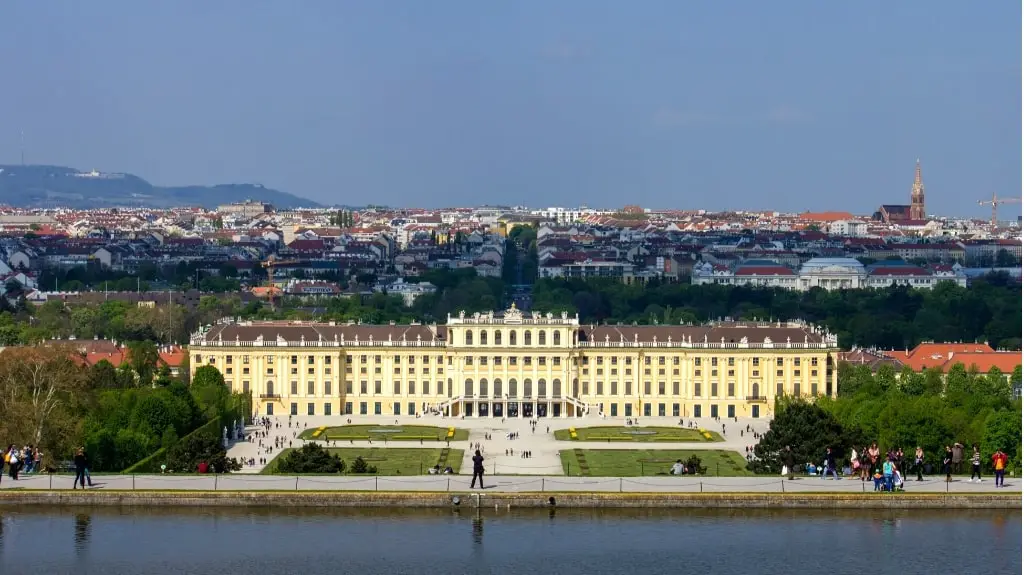
- The Schönbrunn Palace. The majestic symbol of Vienna and former summer palace of the Habsburgs dynasty is open for tourists. With a whopping 1,440 rooms, the palace is just as enormous as it’s indescribably beautiful. The name of the palace literally translates to “beautiful spring”. The best part? You can become royalty for a day by booking a room here.
- Vienna Zoo. The oldest working zoo in the world is in the Austrian capital. Established in 1752, the Vienna Zoo is still operational and welcomes visitors. You’ll find it in the gardens of Schönbrunn Palace. Once you enter the zoo, you’ll discover more than 700 animal species. The jaw-dropping Baroque architecture and the animal variety make the Vienna Zoo one of the best in Europe.
- The Museum of Natural History. Museums don’t get more impressive than the Museum of Natural History of Vienna. The facility holds an incredible collection of 30 million units from every corner of the world, including meteorites, fossils, and minerals. The museum also features a magnificent planetarium with large-scale projections of the solar system under its domes.
- The World Museum Vienna (Weltmuseum Wien). The splendid ethnographic museum displays some of the most important collections of non-European culture. Weltmuseum Wien reveals 40,000+ objects from Asia, Africa, and the Americas. Currently, it resides in the Hofburg Palace.
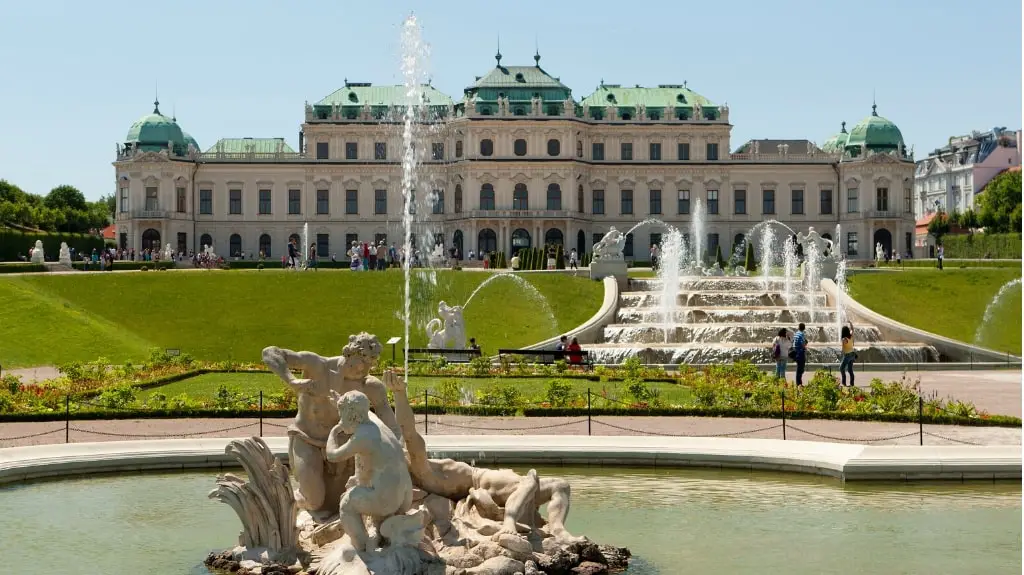
- Belvedere Palace. The Belvedere Palace is yet another proof that Vienna is home to magnificent structures with centuries of history waiting to be discovered. The imposing palace consists of two separate buildings. An enchanting garden from the 17th century divides them. If you admire Baroque architecture, then you’ll love visiting the former home of Archduke Franz Ferdinand and Prince Eugene of Savoy.
- Hofburg Imperial Palace. The Habsburg family extensively used the otherworldly palace for centuries. Hofburg’s most famous chamber is the living room of Empress Elisabeth. The treasury of the palace holds loads of valuables, including gigantic walnut-sized rubies. Visit the premises on a Sunday to catch a performance by the Vienna Boys’ Choir.
- The City Hall (Rathaus). This stunning 19th-century structure boasts a distinctive neo-Gothic style. Considered Vienna’s most important historical building unrelated to religion, it houses the seat of the local government of the Austrian capital. Nowadays, the building and the surrounding area act as a venue for balls, concerts, and markets.
The Cultural Heritage Vienna Is Known For
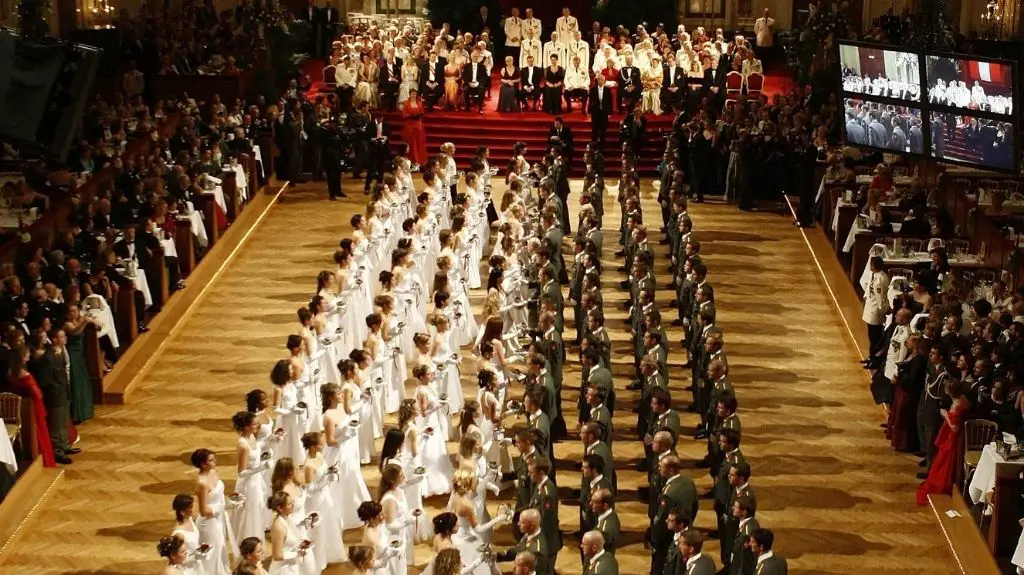
Vienna blends arts, crafts, and culture in a fantastic fusion that leaves visitors speechless. This section will show you the cultural heritage Vienna is famous for.
- The Waltz Capital of the World. Vienna hosts 450+ balls each year. Dressed in tails and gowns, guests have celebrated the enchanting melodies of the Viennese waltz since the 18th century. Some events nowadays feature as many as nine orchestras. They perform the immortal compositions of Josef Lanner, Johann Strauss I, and his son, Johann Strauss II.
- The Wiener Zeitung. The first issue of the Wiener Zeitung dates back to 1703 under the name Wiennerisches Diarium. This makes it one of the oldest newspapers in existence worldwide. 77 years later, authorities renamed the paper for the first and last time. Today, the newspaper primarily publishes important information and announcements about the Austrian government.
- The ballet and opera performances at Staatsoper. The Vienna State Opera (Staatsoper) is a horseshoe-shaped building that is more than just a landmark. It hosts numerous world-class performances. Captivating ballet and opera spectacles take place on its stage under the accompaniment of the legendary Vienna Philharmonic. The Staatsoper opened its doors for the first time in 1860 and its lavish entry hall has welcomed millions of people since then.
- People’s Opera (Volksoper). The Vienna Volksoper is another important part of the city’s culture. During its season from September until June, it puts on a mind-blowing 300 performances. They include opera, operetta, ballet, and musicals, and blend tradition with modern-day art and innovation.
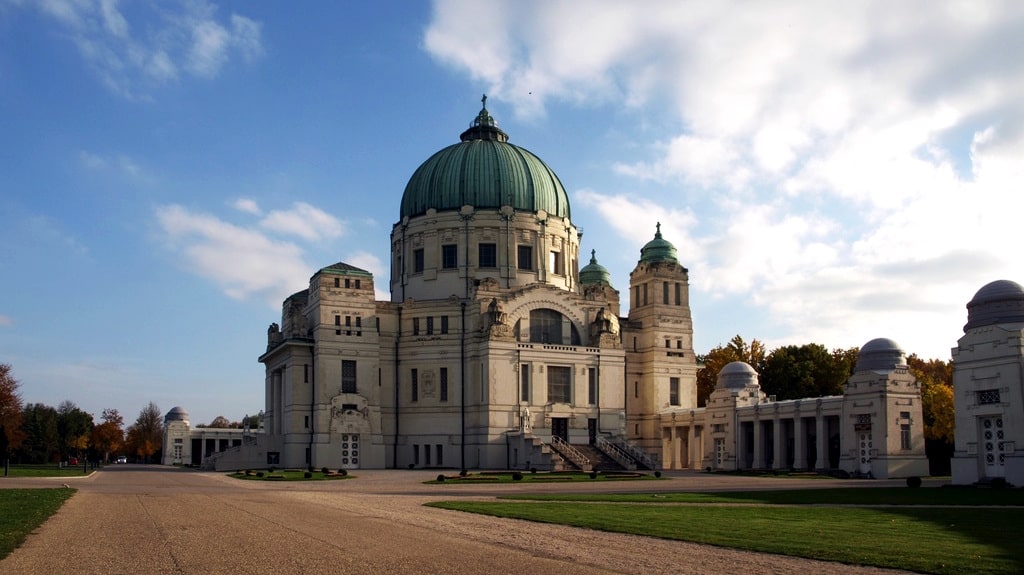
- Vienna Central Cemetery (Zentralfriedhof). While it may sound like a grim location, the Vienna Central Cemetery is often referred to as an amazing outdoor museum. The Zentralfriedhof is an otherworldly place fitting for a city such as Vienna. It is a popular tourist destination much like the famous Père Lachaise Cemetery in Paris.
- The Spanish Riding School. When visiting Hofburg Palace, you’ll have the chance to witness the magic of the Spanish Riding School. The origins of the dazzling performance by professional riders and their white Lipizzan stallions go back to the time of Charles VI. Under the sounds of classical music, the captivating shows take place in a unique Baroque atmosphere.
- The 13th-century house. While it might not be as impressive as the Viennese palaces, Heumühle auf der Wieden attracts many tourists who want to soak up Vienna’s rich past. The small structure is roughly seven centuries old, making it the oldest house in Vienna, and a valuable part of its history.
The Heavenly Viennese Cuisine
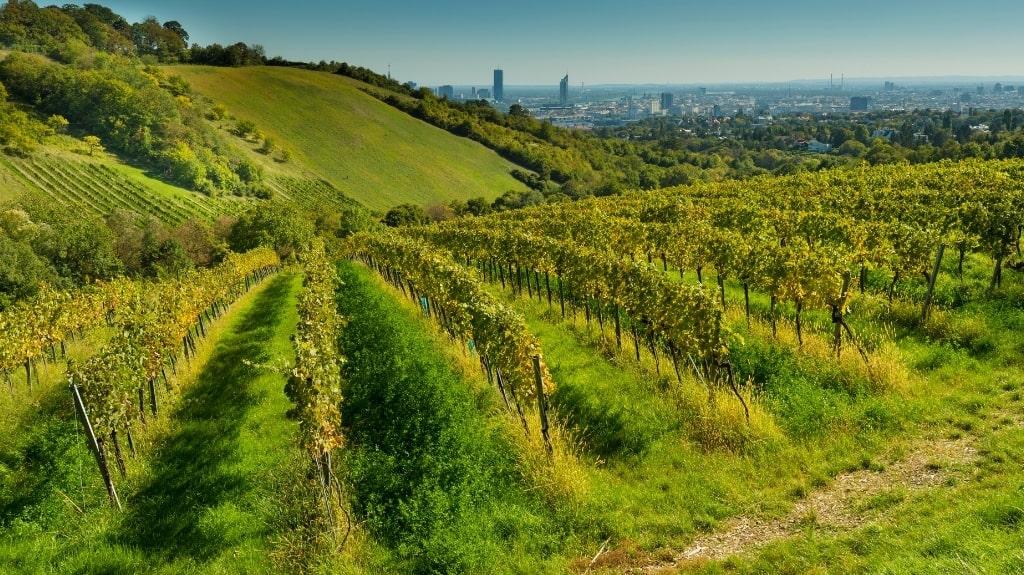
When we talk about Vienna, we can’t help but mention the Viennese mouthwatering dishes, desserts, coffee, and wine. The city packs centuries of traditions in gastronomy. Find the foods and drinks Vienna is known for in the section below.
- Vienna, the Wine City. With approximately 1,700 acres of vineyards found within Vienna’s borders, it’s not hard to imagine why the city is known as the Wine City. If you worship wine, you’ll love to hear that the capital produces it in whopping quantities – over 600,000 gallons per year. When in Vienna, don’t miss a chance to raise a glass of Gemischter Satz, a heavenly blend of white wines. A visit to the vineyards is also one of the best day trips from Vienna.
- The Viennese sausage. As delicious as this sausage is, visitors of Vienna are curious to try it because of the various names it has. The classic Wiener is also famous as the Frankfurter, after the home city of the sausage’s inventor. Regardless of what you call it, the Viennese sausage will forever remain one of the foods Vienna is known for.
- The National Wiener Schnitzel Day. Austrians love their culinary traditions. They celebrate National Wiener Schnitzel Day in honor of the famous meal. The classic schnitzel recipe has never changed. Thin-sliced veal cutlets are dipped in eggs, flour, and breadcrumbs, then deep-fried. The result? Nothing short of pure delight for your taste buds.
- The birthplace of the French croissant. It might sound crazy, but the French croissant is not a French invention. The word “croissant” is a derivate of Kipferl (“crescent” in German) – in regard to its shape. Austrian pastry chefs created the dessert to celebrate the victory over the Ottoman Turks by the Austrian soldiers. Marie Antoinette introduced the croissant to King Louis XVI who made it popular in the French royal court.
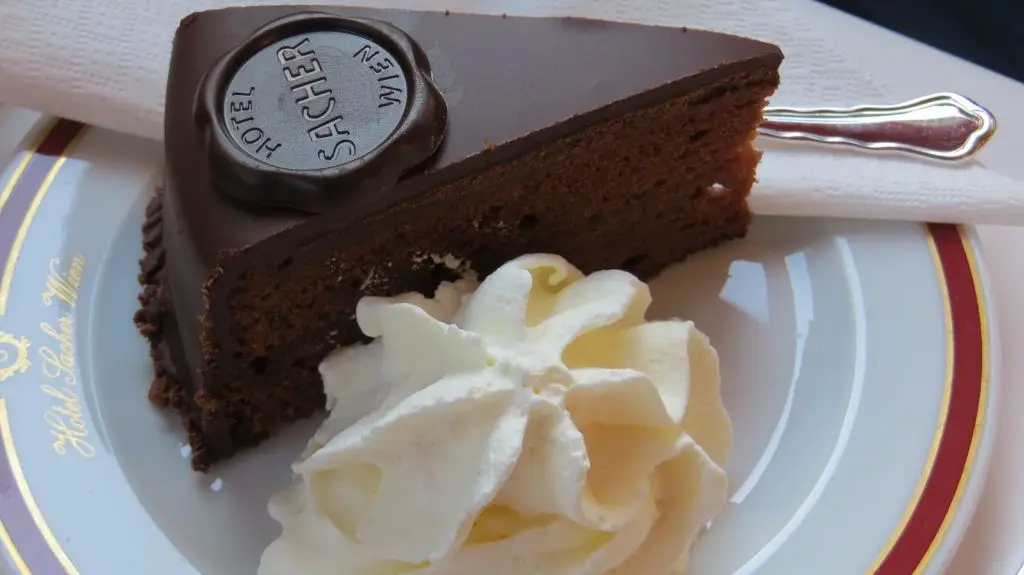
- The Sacher Torte. You won’t find it difficult to taste the Sacher Torte as most eateries in Vienna serve this scrumptious traditional dessert. The original recipe dates back to 1832 when Frank Sacher, apprentice of the chef who prepared Prince Metternich’s menu, needed to come up with something new. It ended up becoming one of Vienna’s signature culinary temptations.
- The home of Manner Schnitten. The classic wafers filled with hazelnut crème are one of the most popular culinary emblems of Vienna. Josef Manner created this finger-licking goodness approximately 120 years ago. The wafers became an instant success, and Manner developed his own brand. The Manner logo features Stephansdom, and one of the masons in the cathedral always wears a special uniform bearing the Manner brand signs.
- Vienna’s traditional coffee houses. If you can’t function without caffeine, you must experience the unique Viennese coffee culture. The traditional cafés are on the UNESCO World Heritage List. The history of coffee houses in the Austrian capital goes back to the 17th century. The vintage establishments still play an important role in the social life of the city. Most of them serve their decadent drinks on marble tables. Now, that’s a special way to power start your day.
The Curious Facts Vienna Is Known For
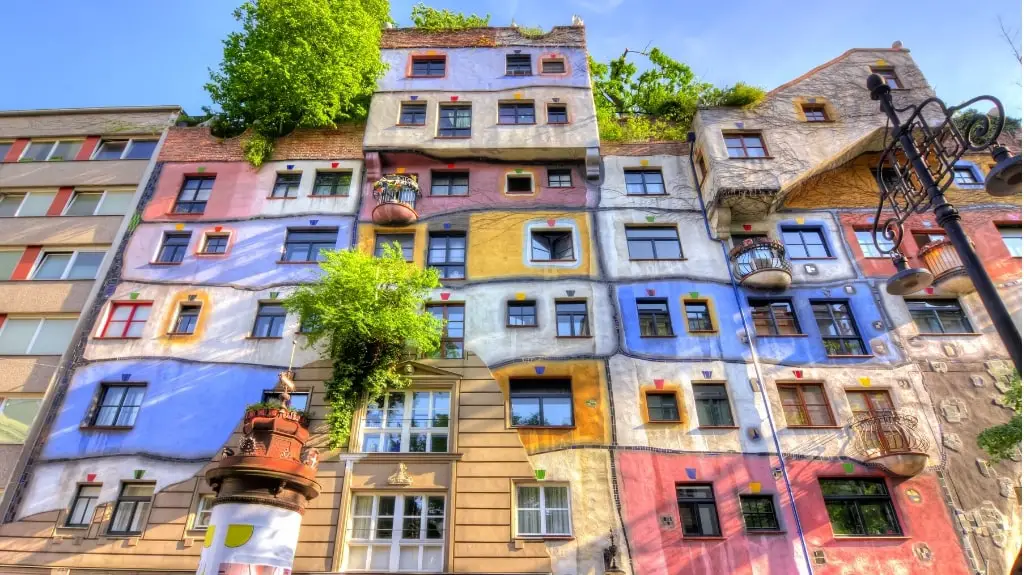
Thousands of fascinating stories, events, and places mark Vienna’s history. Each one of them has contributed to the city’s popularity across the globe. In this section, you can explore the facts Vienna is famous for.
- Home to many important historical figures. Part of the city’s legacy is the famous people who roamed its streets. Vienna was home to Joseph Stalin, Adolf Hitler, Mark Twain, Leon Trotsky, Otto Wagner, Gustav Klimt, Friedensreich Hundertwasser, and many more.
- The city with the highest quality of living. One of the most interesting facts about Vienna is that it’s the best city in the world in terms of quality of living. Vienna has reigned prestigious rankings such as the Mercer for over a decade. The ranking considers several factors, including facilities, economics, employment, food, transport, culture, and entertainment.
- The City of Music. Wolfgang Amadeus Mozart, Ludwig van Beethoven, Joseph Haydn, Johannes Brahms, Franz Schubert, Gustav Mahler, Arnold Schoenberg, and Robert Stolz all worked in Vienna at some point in their career. Their immortal contribution to the world of music is the main reason why Vienna is often dubbed The City of Music.
- The City of Dreams. Sigmund Freud is among the most famous people who called Vienna their home. The pioneer of psychoanalysis spent many years working and researching in the city. As a result, Vienna is referred to as the cradle of psychotherapy and known as The City of Dreams. Freud’s old apartment is now a museum dedicated to his work. If you’re looking for unusual things to do in Vienna, you should pay it a visit.
- Divided after WWII. The Allies decided to split Vienna into several sections immediately after the end of WWII. France, the Soviet Union, the U.K., and the U.S. occupied the city all at once. The Austrian State Treaty put an end to this in 1955.
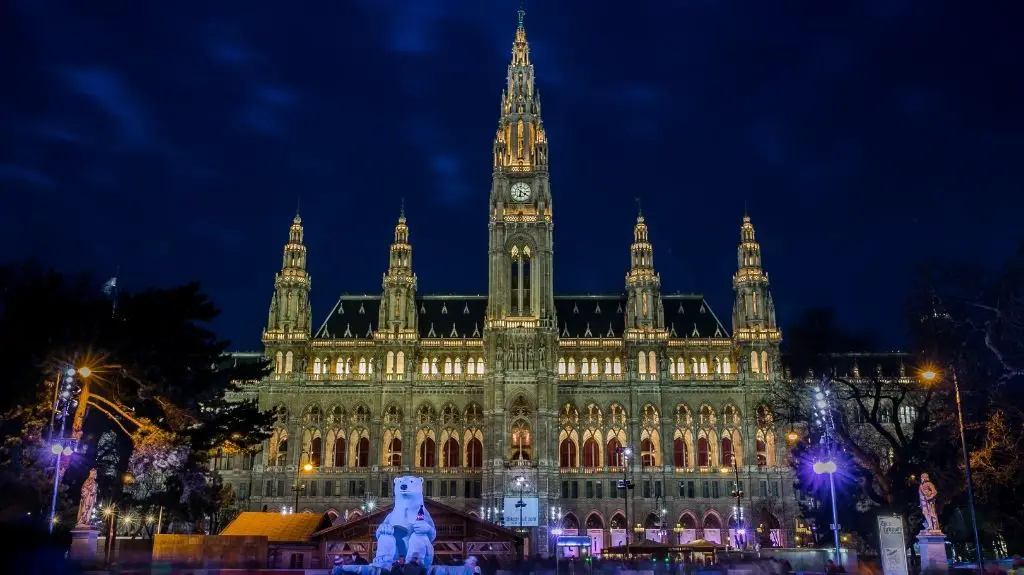
- The enchanting Christmas markets. One of the most attractive annual traditions in Vienna is famous for gathering people from all over the world. The Christmas Markets transform the city’s landmarks, including the Rathausplatz, the Biedermeier Quarter, and the Schönbrunn Palace. The endless variety of presents, sweets, and candles, and the smell of gingerbread and mulled wine create the best festive mood imaginable.
- The magical Vienna ice rink. If you’d like to experience Vienna’s fairy-tale winter transformation, visit the gigantic ice skate rink that emerges between January and March. Nested next to the City Hall, the attraction adds to Vienna’s diverse forms of entertainment and makes the city truly magical.
- The birthplace of snow globes. Back in 1900, Erwin Perzy experimented with improving the light emitted from a surgical lamp lightbulb. He added semolina flakes and water. He didn’t manage to improve brightness, but he created the snow globe – one of the several symbols of Vienna. The first snow globe had a small-scale replica of the Basilica of Mariazell inside.
Which of These Things Vienna Is Known For Did You Already Know?
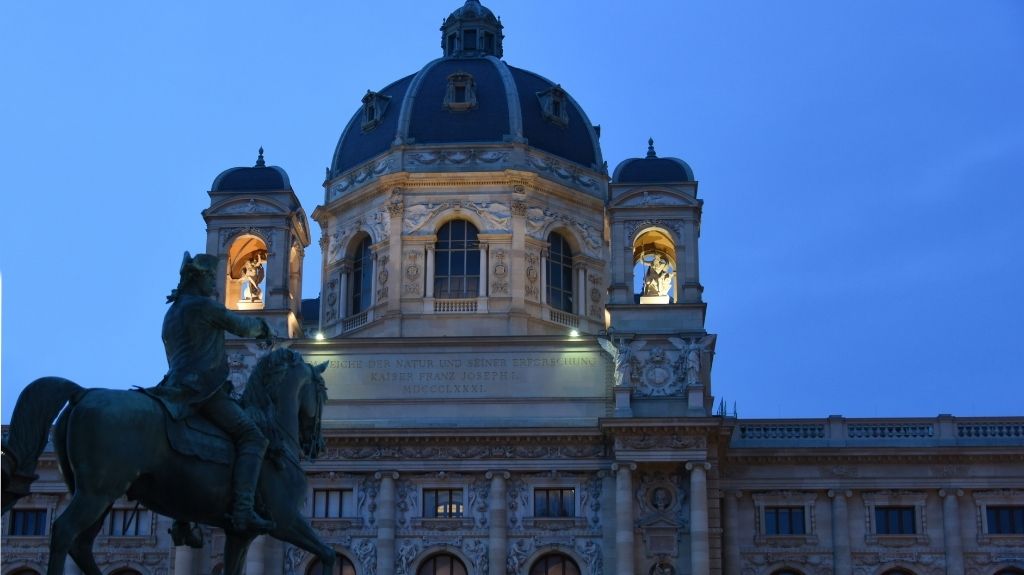
We bet these 33 amazing things Vienna is famous for made you want to visit the city even more.
The Austrian capital overflows with art and culture, imperial palaces, curious facts, must-try wines, and delectable dishes.
To have a truly amazing trip, we’ve also prepared 33 Vienna travel tips, so you can explore the city like a pro.
Start Planning Your Trip to Vienna with Our BEST Recommendations:
⭐ Top Tours in Vienna ⭐
📍 Strudel Show at Schönbrunn Palace – this is our top recommendation to experience the traditional Viennese apple strudel in a regal setting.
📍 Hallstatt & Alpine Peaks Day Trip – breathtaking peaks, serene lakes, and quaint villages await you on this day trip to Hallstatt. Join before it’s fully booked!
⭐ Best Accommodations in Vienna ⭐
🏨 Steigenberger Hotel Herrenhof – affordable luxury lodging in the historic center.
🏨 Schönbrunn Palace – stay in one of Europe’s most staggering palaces.
⭐ Easiest Transportation Options in Vienna ⭐
🚍 Vienna City Card – enjoy discounts, free travel, and entrances to museums.
🚍 Discover Cars – compare and find the best rates for car rentals.
Before you leave, could you share with us:
What do you associate Vienna with?
Let us know in the comments below.

